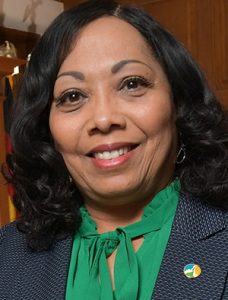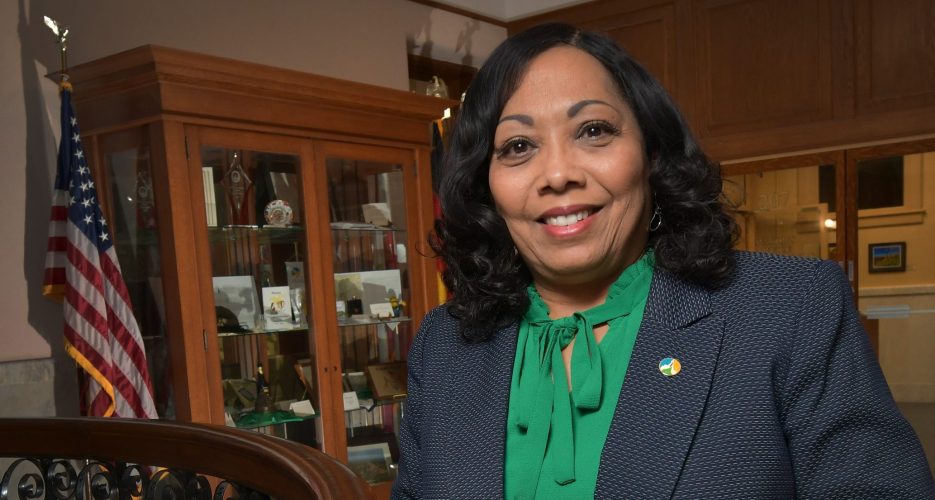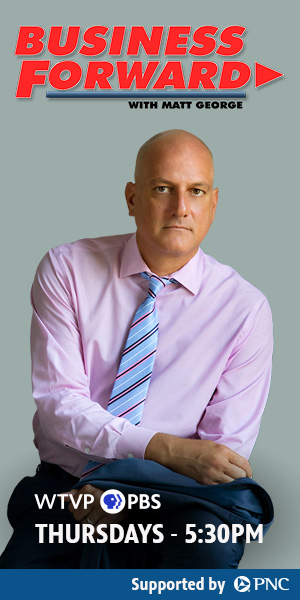Peoria’s pioneers for equality paved the way for this mayor and for a city now ‘positioned for progress.’
My childhood experiences and memories growing up on Peoria’s South Side are vivid and left me with impressions that will last a lifetime. They shaped me to become the woman and leader I am today.
I was a young kid during the peak of the civil rights movement when our nation was trying to reconcile its sins of slavery and the oppression of people of color and women. Following lengthy and fierce protests, debates and legal cases, new laws were established, giving more rights and opportunities to Blacks and women.
We self-iDentified from ‘colored’ to ‘Negro’ to ‘black’ to ‘African American’ to ‘Black’ (again).
Peorians were very much a part of this journey. Courageous local civil rights leaders such as John Gwynn, Jr., Valeska Hinton and Frank Campbell forged coalitions for fair treatment and change within education, housing and employment. They worked for more minority participation in the construction trades and government contracts. I mostly observed this as a young child, but later participated in these efforts as a young adult.
We self-identified from “colored” to “Negro” to “black” to “African American” to “Black” (again), attempting to be more inclusive of our experience yet conscious of our heritage. Self-identification long has been recognized as critical to people whose lives have been diminished by systems designed to subjugate them. Lifting people’s pride, in the midst of the struggle, has been a tireless effort that builds the tenacity to persevere and to strive for greater success. Peoria has served as fertile ground for my leadership growth and development.
I grew up in Peoria during an era when women and Black people were demanding more rights, opportunities, respect and equal treatment under the law. Sit-ins at City Hall, the Peoria Public Schools administration building and the former Central Illinois Light Company headquarters were commonplace. The Urban League, George Washington Carver Community Center, Community Action Agency and the NAACP all advocated for Peoria’s Black community. Their leaders were tenacious and perceived as a threat by some. But they were highly effective in creating new opportunities and bringing new resources to support the various needs of people seeking to improve themselves and their situations.
Peoria, as a whole, benefited from those efforts to achieve equality, which gained momentum when a number of white leaders joined in and several employers and organizations made commitments to progress. And progress was made in numerous areas, as evidenced by the success stories of many Black Peorians. Yet, despite that progress, it’s important to understand that disparities, based upon race, continue to plague our city.
Old systems of discrimination must continue to be dismantled through real collaboration. The work of the new Peoria City-County Joint Commission on Racial Justice and Equity, consisting of 150 diverse stakeholders, gives me hope for our future as a city of opportunity for all.
Throughout my youth, I was mentored by numerous community members, often informally. Someone would notice my potential and include me in some way, providing guidance and allowing me to shadow them or interact in some way. They would tell me to increase my education, serve on a non-profit board, put in some volunteer time. These are some of the wombs that gave birth to me.
That mentorship, combined with my education, employment and community experience, has been my pathway to becoming Peoria’s first woman and first Black mayor. From this vantage point, I foresee great things ahead for Peoria.
I serve as the mayor for all the people of Peoria, yet I have the distinct gift of understanding this role from the perspective of a woman and a person of color. Not taking anything from my male predecessors, I believe it gives me a broader, more sensitive viewpoint on matters that are important to a city as diverse as Peoria.
I was not surprised that Peoria might elect a woman mayor, nor was I surprised that Peoria might elect a black mayor. I understand Peoria to be positioned for progress and I’m forever grateful and humbled to have this opportunity to serve and to prove myself capable.
Based on data, we have a lot of inequities to address and a lot of problems to overcome in Peoria. Although still a minority-majority neighborhood, the South Side of today is not the South Side that I grew up in where approximately 33,000 people lived. It had grocery stores, pharmacies and retail shops owned by local entrepreneurs of various races and ethnicities. There were many working households.
Today, there are fewer than 14,000 residents and high concentrations of poverty, crime and dilapidated housing. There are no grocery stores or pharmacies, very few retail stores and fewer working households. But progress is being made for expanded quality housing, infrastructure improvements and a Peoria Cradle to Career Initiative plan to transform this area through strong, committed public-private partnerships.
I understand Peoria to be positioned for progress.
The East Bluff has similar challenges and similar strategies for improvement.
Peoria’s progress will come through collaboration, commitment and unity, and I am very optimistic for its future.





